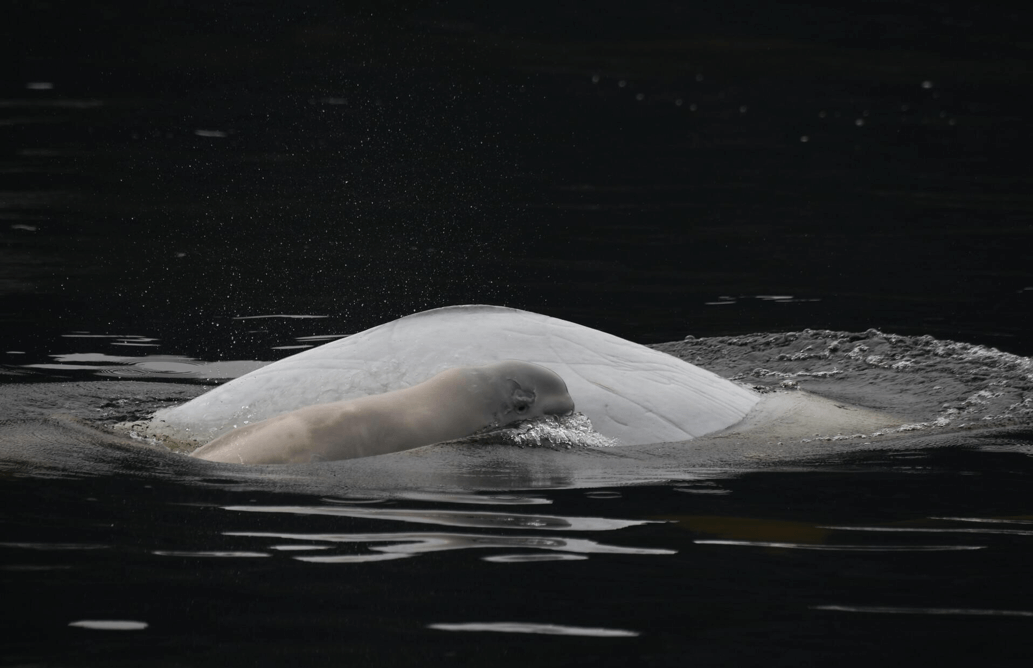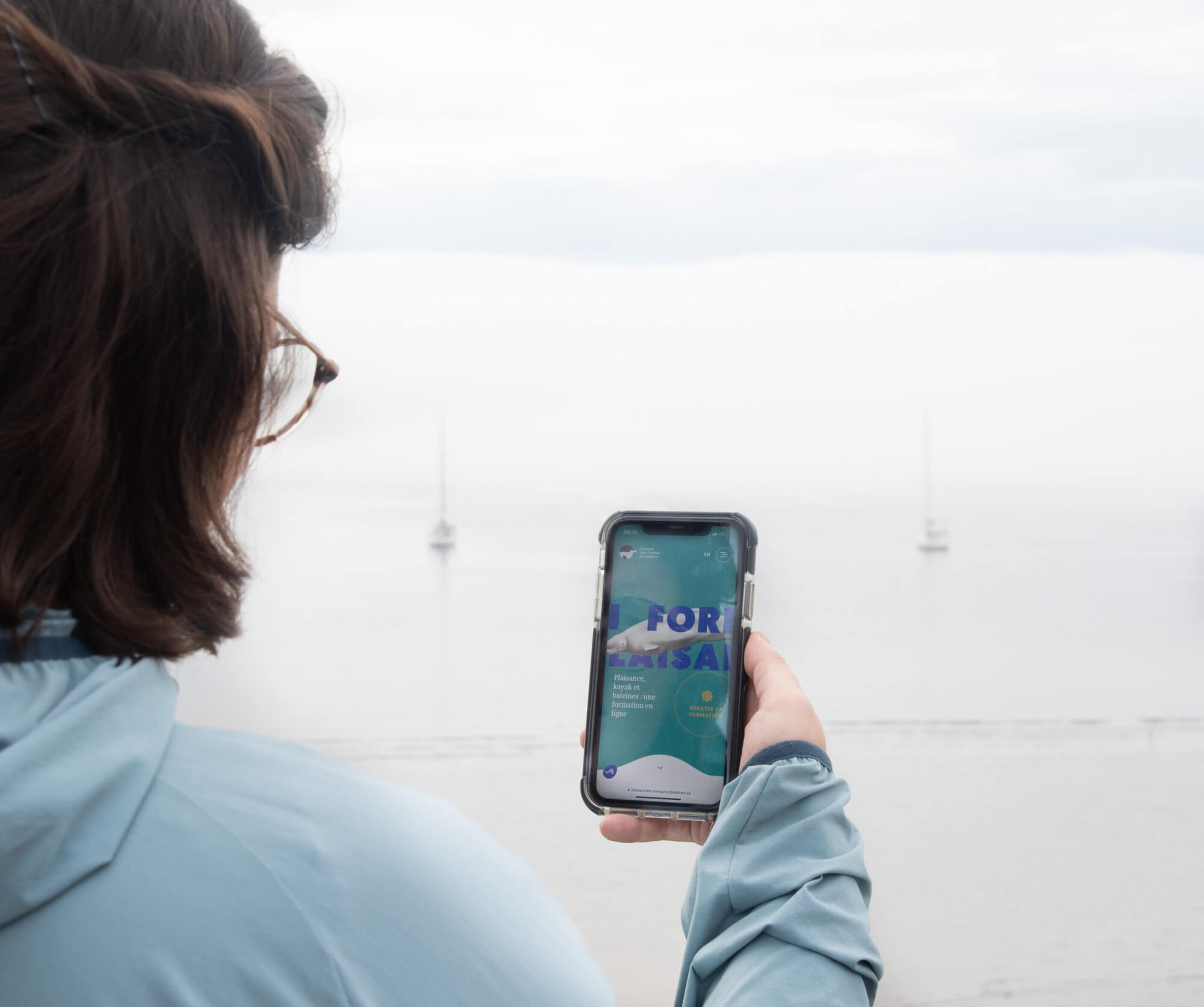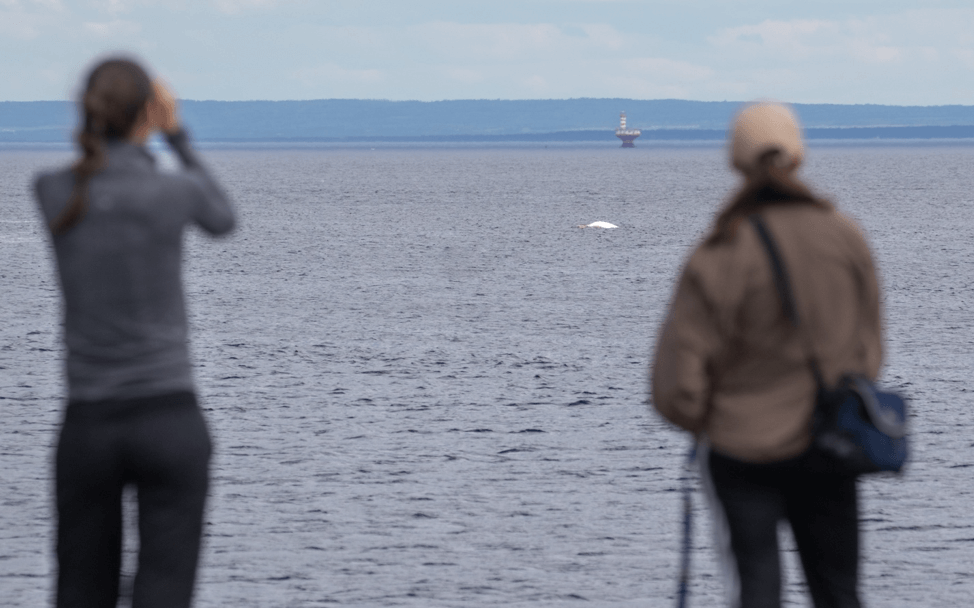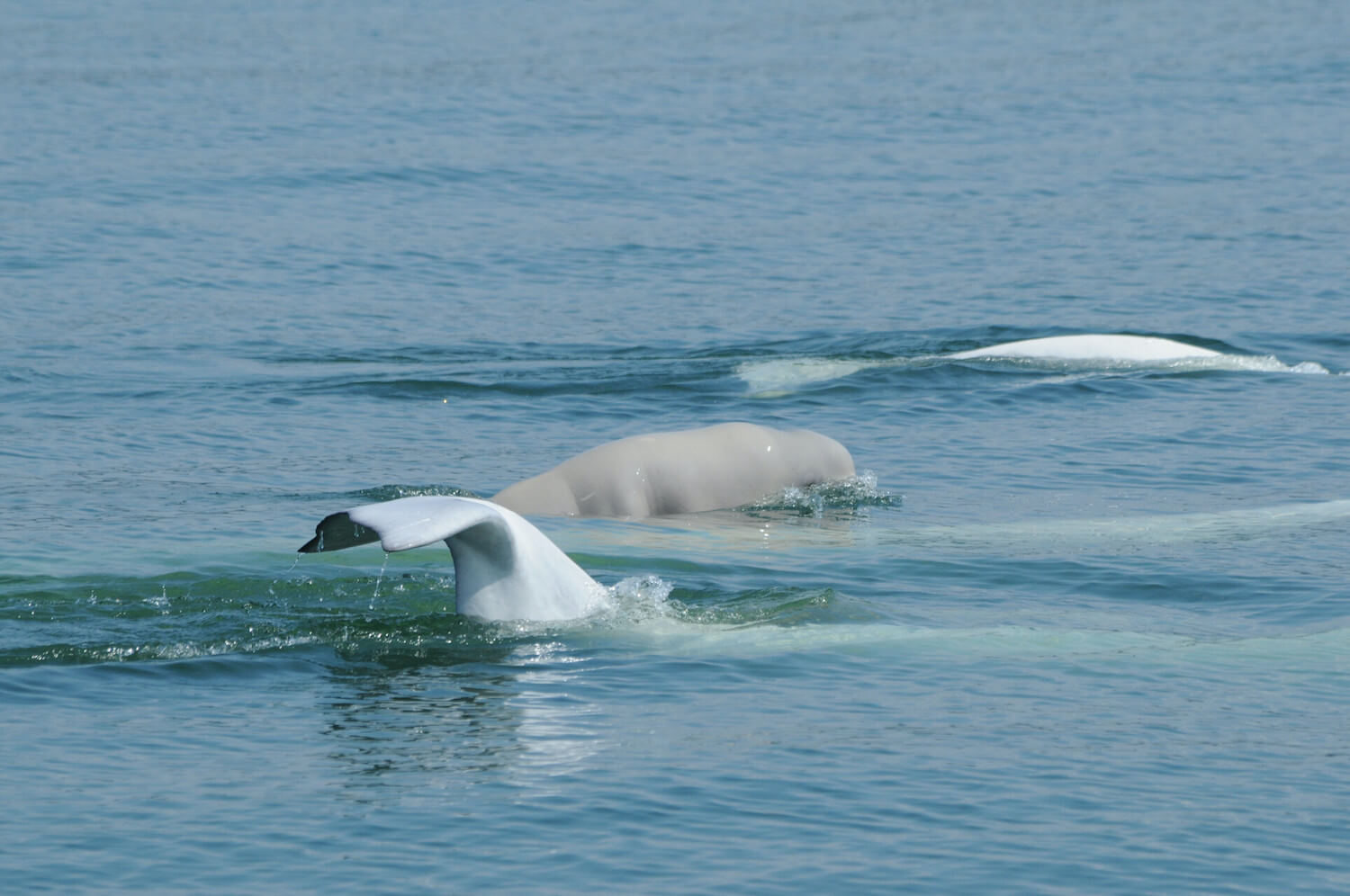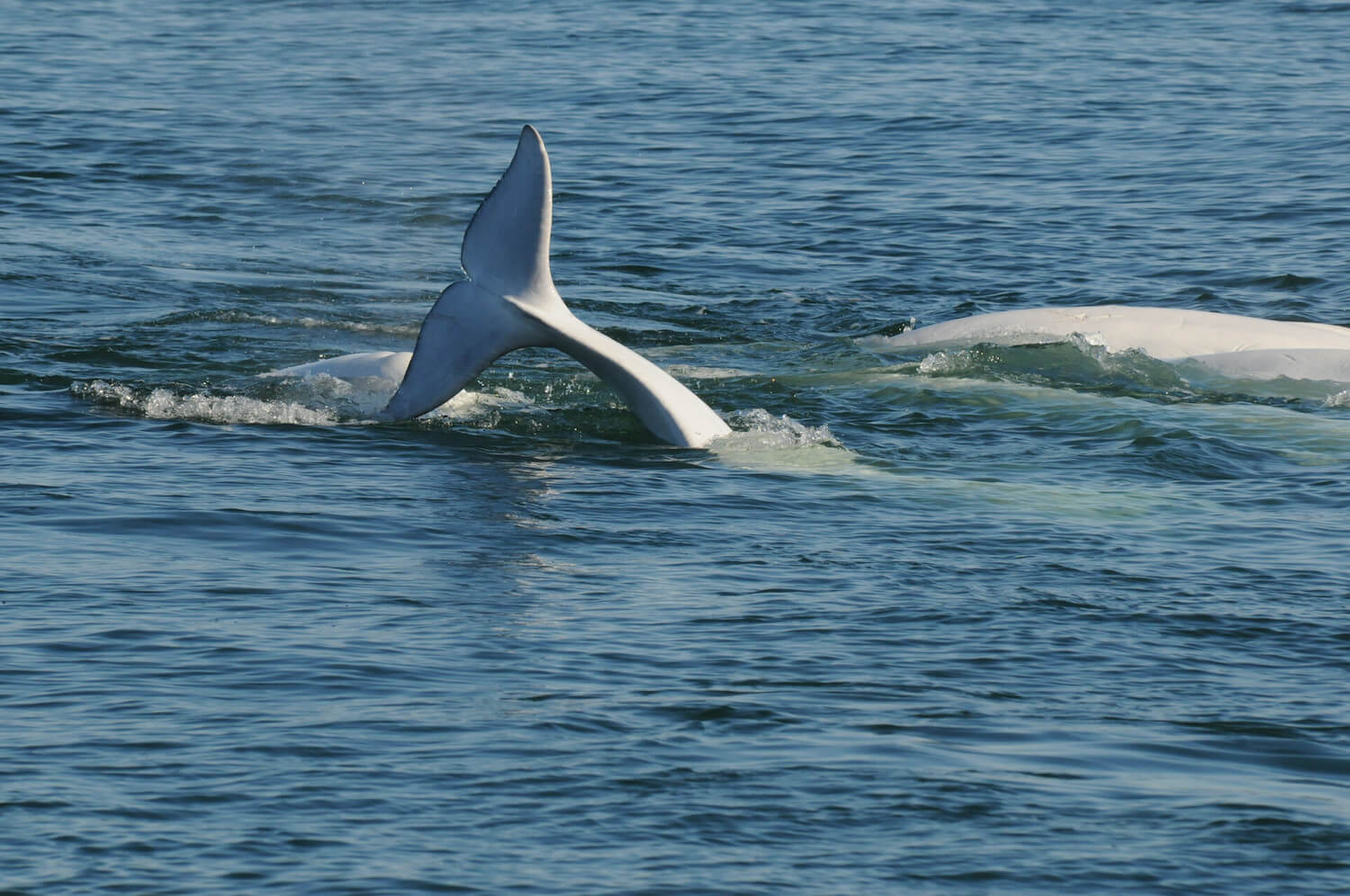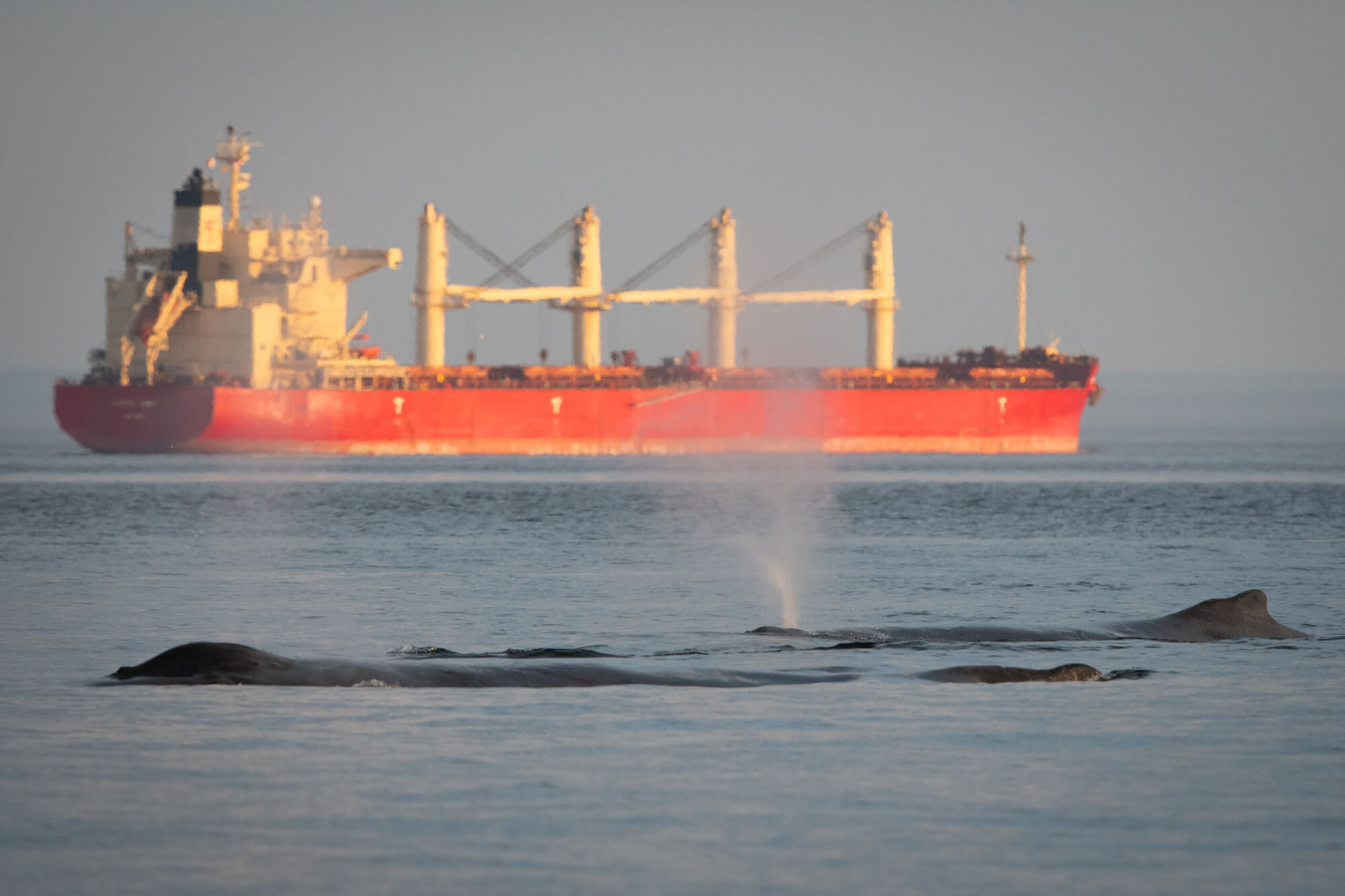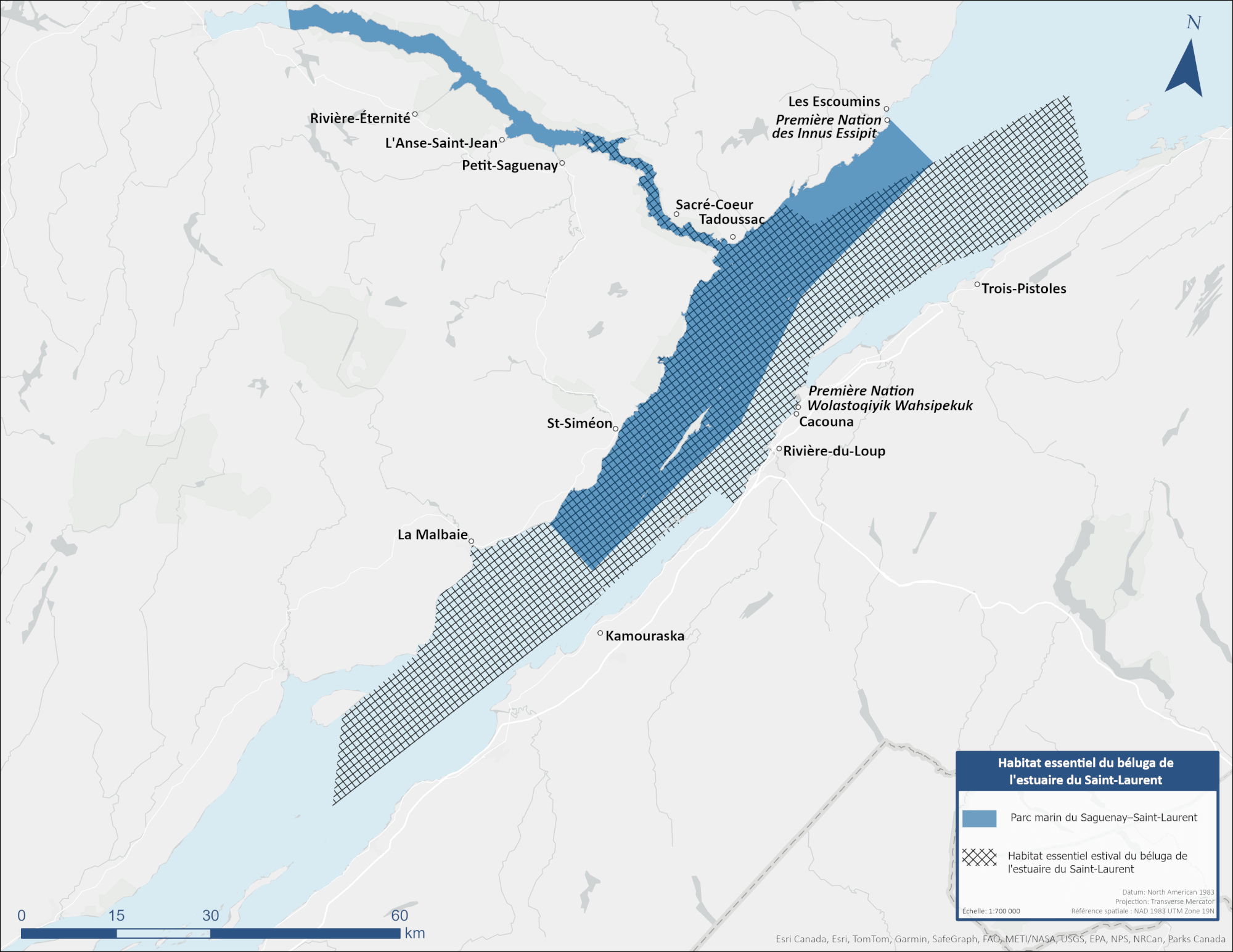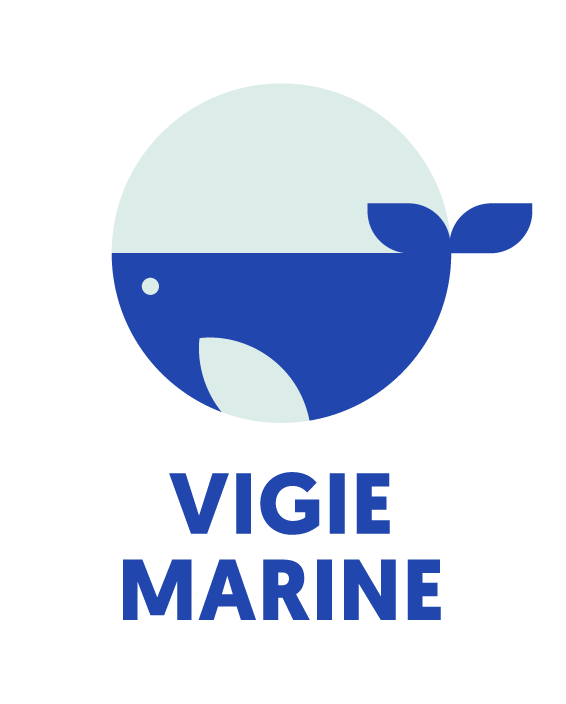The endangered St. Lawrence beluga needs your help to recover. For several years, the Group for Research and Education on Marine Mammals, the Marine Mammal Observation Network, Parks Canada and Fisheries and Oceans Canada have been collaborating to carry out an awareness campaign on the St. Lawrence beluga. Do you want to join and contribute to the movement, but don’t know where to start? Here are five actions to help protect this endangered species!
Educate yourself!
Whale conservation goes hand in hand with a good understanding of how these animals live. As Jacques Cousteau said so well: “We only protect what we love, we only love what we understand, and we only understand what we are taught.”
Navigating whale habitat can be very exciting, but challenging as well. The ”Navigating Whale Habitat” training course is free and accessible on mobiles, tablets or computers. In 30 to 45 minutes, you will learn about the regulations in force in the region and acquire the know-how needed to co-exist with the giants of the seas. You will receive a certificate attesting that you have successfully completed the training.
To find out more about belugas, Whales Online is a good reference! Every week, articles on scientific news, the latest sightings and answers to your questions are published. The weekly newsletter also offers a summary of the latest news. Both a magazine and an encyclopedia, Whales Online has something for everyone!
Visit land-based observation sites
Land-based whale watching is the only way to encounter St. Lawrence belugas in their natural environment. From shore, there is no risk that they will be disturbed! To facilitate the creation of lasting memories, a number of places have been established to admire these white whales:
– Marine Mammal Interpretation Centre (CIMM), Tadoussac
– Pointe-Noire Interpretation and Observation Centre, Baie-Sainte-Catherine
– Cap de Bon-Désir Interpretation and Observation Centre, Les Bergeronnes
– Marine Environment Discovery Centre, Les Escoumins
– Putep ‘t-awt observation site, Cacouna
– Baie-Sainte-Marguerite sector, Fjord-du-Saguenay National Park, Sacré-Cœur
Boaters, keep your distance on the water!
Should one or more belugas ever approach your boat, you must maintain a constant speed and direction in order to maintain the minimum regulatory distance of 400 metres between you and the animal(s) at all times.
In the presence of a boat, belugas will alter their behaviour. It’s hard to know what we’re interrupting: a meal, the crucial moment of giving birth or even a period of sleep. With thousands of boats plying the waters, interactions accumulate over time and have adverse effects on belugas and their health. This is why there are rules for operating watercraft in the presence of these white whales which aim to minimize human disturbance. Canada has specific regulations to respect, while additional rules apply in the Saguenay-St. Lawrence Marine Park.
Changing one’s consumer habits
Belugas feed, reproduce, give birth and raise their young in the St. Lawrence. Protected by ministerial order under the Species at Risk Act and delineated by Fisheries and Oceans Canada, the beluga’s critical habitat is essential to the survival and recovery of the population. As every little gesture counts, adopting environmentally-friendly behaviours also helps protect beluga habitat!
The things we buy have a direct impact on the environment and on whales. The majority of goods and foodstuffs are moved by freighters. Thus, by opting for products produced locally, we can help stem the increase in shipping traffic. What’s more, this measure also helps mitigate underwater noise pollution.
Reducing plastic consumption is also a good way to help protect belugas. Plastic bags, single-use bottles and straws are all examples of items that can easily be replaced by more sustainable alternatives. Larger pieces of plastic can affect toothed whales like belugas, which mistake them for prey. Such ingestion is sometimes fatal as it can block the stomach or puncture one of the organs in the digestive tract. Additionally, fragmentation of this waste into microplastics releases toxic chemical compounds that accumulate in the tissues of St. Lawrence belugas.
Your clothing choices can also make a difference. By opting for natural textile fibres, you will help reduce the largest source of microplastic emissions in the St. Lawrence!
Participate in citizen science
Whether it’s by reporting your sightings or volunteering with a conservation organization, there’s no wrong way to get involved in whale protection. Such public engagement also allows research to evolve!
Whether you live near the St. Lawrence or are just visiting the region, reporting your observations in the Vigie marine data entry tool is a wise idea. This data collection tool was implemented in 2021 by several partners, including the Marine Mammal Observation Network (MMON). To complete the form, you must enter the time and date of the observation, the location, the species identified and the weather conditions. From the beluga whale to the grey seal, not to mention the basking shark and the leatherback sea turtle, just about any marine animal can be reported here! By recording and reporting what you have seen throughout the year, large databases are compiled and used, notably by scientists who rely on them for their research projects. These data are also sometimes used as a means of raising awareness and facilitating the implementation of conservation measures.
As citizens, you are the eyes of the Quebec Marine Mammal Emergency Response Network in the field. Should you observe an entangled whale or a marine mammal carcass on a beach, contact the Marine Mammal Emergencies call centre immediately (1-877-722-5346). Mobile teams and volunteers will then take the necessary actions depending on the situation. If carcasses are discovered quickly enough, they can be used for research and provide insight into the population dynamics of these large mammals. Additionally, each report is recorded in a database, which allows scientists to track the number of carcasses recovered from year to year. This is the case for the St. Lawrence beluga, which has been monitored for over 40 years now.
Join the movement to protect belugas!


